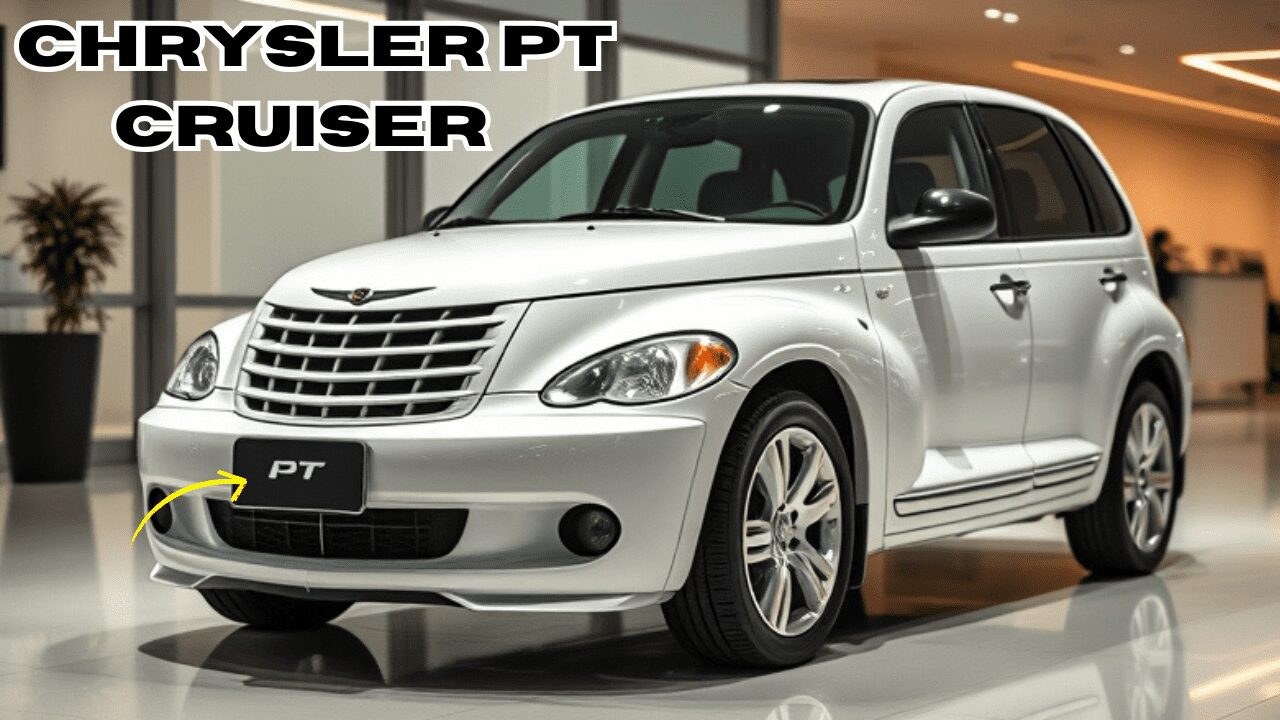The Chrysler PT Cruiser, introduced in 2000, is a vehicle that divided opinion like few others. Some viewed it as a bold statement of individuality, while others criticized its unconventional design. Regardless of perspective, the PT Cruiser undeniably left a lasting impression on the automotive landscape. Combining retro aesthetics with modern practicality, the PT Cruiser became a cult classic that exemplified Chrysler’s willingness to push the boundaries of car design.
Origins and Design Philosophy of Chrysler PT Cruiser
The Chrysler PT Cruiser was the brainchild of Bryan Nesbitt, who sought to create a vehicle that harkened back to the American cars of the 1930s and 1940s. With its high roofline, flared fenders, and vertical grille, the Chrysler PT Cruiser embodied a nostalgic look while incorporating the conveniences of a modern car. Its design drew inspiration from hot rods and panel vans, offering a unique aesthetic that set it apart from the boxy or streamlined styles of the era.
Although classified as a compact car, the Chrysler PT Cruiser’s tall body and versatile interior gave it the feel of a much larger vehicle. It was built on the same platform as the Dodge Neon, but its clever packaging allowed for surprising interior space, making it a practical choice for families and those needing extra cargo capacity.
Features and Variants
From its debut, the Chrysler PT Cruiser offered a range of trims to cater to different preferences and budgets. The base model came with a modest 2.4-liter inline-four engine, delivering adequate performance for city and highway driving. For those seeking more power, Chrysler introduced turbocharged versions in 2003, offering up to 230 horsepower in the GT model.
The Chrysler PT Cruiser was available in various body styles, including a four-door hatchback and a two-door convertible. The convertible version, introduced in 2005, added a sense of fun and open-air freedom to the Chrysler PT Cruiser lineup. It featured a power-folding soft top and a more rounded rear-end design, enhancing its appeal to younger buyers.
Interior versatility was one of the PT Cruiser’s standout features. The rear seats could be folded, tumbled, or removed entirely, allowing the vehicle to transform from a comfortable five-seater to a cargo-hauling workhorse. Combined with its high seating position and large windows, the PT Cruiser offered excellent visibility and a spacious feel, making it a favorite among urban drivers and small families.
Market Reception
The PT Cruiser’s launch was met with significant enthusiasm. Its retro-inspired design struck a chord with buyers looking for something different from the mainstream options. Sales exceeded Chrysler’s expectations in its initial years, with over 1.35 million units sold worldwide during its production run.
Critics praised the PT Cruiser for its distinctive looks, roomy interior, and affordability. However, some noted its lackluster handling and underpowered base engine as drawbacks. Over time, these criticisms, combined with shifting market trends, led to a decline in its popularity.
Cultural Impact
The PT Cruiser quickly gained a reputation as a car that defied categorization. It was embraced by custom car enthusiasts, who saw its retro styling as a blank canvas for personalization. Owners frequently modified their PT Cruisers with custom paint jobs, aftermarket wheels, and unique interior touches, further cementing its status as a cultural icon.
The vehicle also found a place in popular media, appearing in movies and television shows that sought to capture its quirky charm. Its design became synonymous with individuality, appealing to a diverse range of drivers, from retirees to young professionals.
Legacy and Discontinuation
Production of the PT Cruiser ceased in 2010, a decade after its introduction. By that time, its once-groundbreaking design had become less appealing to consumers seeking sleeker, more fuel-efficient vehicles. The compact crossover segment, which offered similar versatility with more contemporary styling, had begun to dominate the market.
Despite its discontinuation, the PT Cruiser remains a beloved vehicle among enthusiasts. It represents an era when automakers were willing to take risks and cater to niche markets. Today, well-maintained PT Cruisers are sought after by collectors and fans of retro-inspired design, with some models commanding surprisingly high resale values.
Conclusion
The Chrysler PT Cruiser stands for its power of bold design and individuality in the automotive world. Its unique blend of retro aesthetics and modern functionality made it a standout vehicle during its time. While it may no longer roam the streets in large numbers, the PT Cruiser’s legacy endures, reminding us that cars can be more than just transportation; they can also be statements of personality and creativity. Whether loved or loathed, the PT Cruiser remains an unforgettable chapter in Chrysler’s history and a symbol of automotive innovation at the turn of the 21st century.



